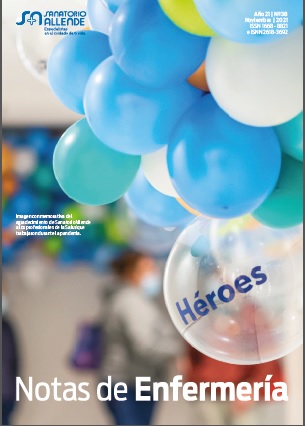Educational plan for adult patients receiving oral cytostatics at home
DOI:
https://doi.org/10.59843/2618-3692.v21.n38.35420Keywords:
Care, adherence, oral chemotherapy, education, nursingAbstract
Oral chemotherapy began to emerge between 1940 and 1950, it is estimated that at least 25% of existing neoplastic agents are expected to be oral and thus its administration is expected to increase in the coming years. The use of these oral cancer drugs brings advantages for the patient such as greater comfort, active participation in their treatment, less interference with work and social life and increased quality of life. Objective: To design an educational program on self-care in the treatment of oral chemotherapy in adult cancer patients at home. Methodological Design: A search of different databases such as Pubmed, BVS, Scielo was carried out, obtaining as results 104 articles of which 10 were selected that responded to the research question. Results: After analyzing the selected articles, we can ensure that educating patients and their families about oral chemotherapy is a great challenge that needs permanent adjustments and improvements. Patient education must be constant and permanent.
Downloads
References
1. Alkinson T, Rodríguez V, Gordon M, Aviladesen I, Jewell S, Anselmi K, et al. The Association Between Patient Repored and Objetive Oral Anticancer Medication Adherence Meassures: A Systematic Review
2. Bozovic, I, Zorica T. Oral administrtion of antineoplastic agents the challenges for healthcare profesionales JBUON 2015;20 (3)
3. Schennerider S. Una intervención de enfermería personalizada para la adherencia a la quimioterapia oral.
4. Yagasaki k, Komatsu K. The Need for a Nursing Presence. Clinical Journal of Oncology Nursing
5. Lester J. Safe Handling and Administration Considerations of Oral Anticancer Agents in the Clinical and Home Setting. Clinical Journal of Oncology Nursing.
6. Komastsu H, Yagasky K, Yoshimura K. Current nursing practice for patients on oral chemotherapy: a multicenter survey in Japan. BMC Res Notes 2014; 7:259
7. Lonneke T, Kropff F, Peter M, Swart E. Adherencia y experiencia de los pacientes con el uso de agentes anticancerosos orales.
8. Rittenberg CN. Meeting educational needs and enhancing adherence of patients receiving oral cancer agents through use of the MASCC Oral Agent Teaching Tool. Eur Oncol Hematol 2012; 8:97-100. 3.
9. Rudnitzki T. Oral for Cancer SAFE Challenges and Recommedations. Clinical Journal of Oncology Nursing.2014
10. Easty A, Coakley N, Cheng R, Cividino M, Savage P, Tozer R, et al. Safe handling of cytotoxics: guideline recommendations. Current Oncology. 2015 febrero; 22(1).
11. Meade E. Avoiding accidental exposure to intravenous cytotoxic drugs. British Journal of Nursing. 2014 agosto; 23(16).
12. Macho Rivero. Uso seguro de citostáticos a nivel domiciliario. Congreso de Enfermería, España.2016
http://www.cdc.gov/niosh/docs/2012-150/pdfs/2012-150.pdf
13. Díaz MS, Pareja A, Martínez de Guzmán M, Cercos AC. Gedefo - Sociedad Española de Farmacia Hospitalaria. [Online].; 2009 [cited 2015 abril 25 [Póster]. Available from: http://gruposdetrabajo.sefh.es/gedefo/images/stories/documentos/gedefo_poster%20orales_vs3_201 0.pdf
14. Arceiz Campos C, Ibáñez Rodríguez JE, Romo Garrido G. riojasalud. [Online].; 2012 [cited 2015 abril Available from: http://www.riojasalud.es/rrhh-files/rrhh/protocolo-manejo-seguro-decitostaticos-2999.pdf.13.
Downloads
Published
Issue
Section
License
Copyright (c) 2021 Sanatorio Allende

This work is licensed under a Creative Commons Attribution-NonCommercial 4.0 International License.
Those authors who have published with this journal, accept the following terms:
- Attribution — You must give appropriate credit, provide a link to the license, and indicate if changes were made. You may do so in any reasonable manner, but not in any way that suggests the licensor endorses you or your use.
- NonCommercial — You may not use the material for commercial purposes.

